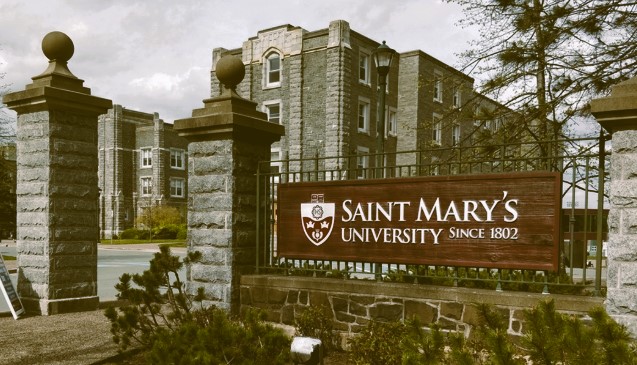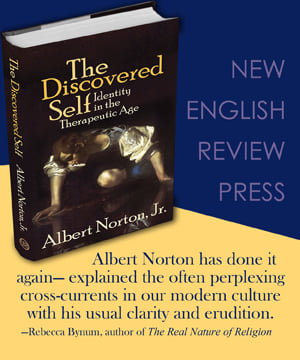By Patrick Keeney
The modern university, once a sanctuary for critical inquiry and truth seeking, has become a laboratory for fashionable ideologies. Mark Mercer, a professor of philosophy at Saint Mary’s University in Halifax and a longtime defender of academic freedom, has provided us with a disturbing case study that reveals the depth of this transformation.
In his recent essay, “No More Loud Discussions of Private Matters, the Cabal Decrees”, Mercer chronicles the steady bureaucratic colonization of his university by a growing army of Diversity, Equity, and Inclusion (DEI) functionaries. It is a disturbing read. He begins by citing the historian Robert Conquest’s third law of politics: “The simplest way to explain the behaviour of an organization’s bureaucracy is to assume that the bureaucracy is controlled by a cabal of the organization’s enemies.”
 Saint Mary’s University now has a Director of Diversity, Inclusion, and Wellness, an Accessibility Lead, a Respectful Workplace Advisor, a sexual violence advisor, ethnicity-specific student advisors, and soon, a DEI Training Specialist. These roles are being integrated into a newly consolidated administrative superstructure under the ominously named Department of People and Culture.
Saint Mary’s University now has a Director of Diversity, Inclusion, and Wellness, an Accessibility Lead, a Respectful Workplace Advisor, a sexual violence advisor, ethnicity-specific student advisors, and soon, a DEI Training Specialist. These roles are being integrated into a newly consolidated administrative superstructure under the ominously named Department of People and Culture.
It is worth noting that few in Saint Mary’s DEI apparatus are academics, but that’s not the scandal. The scandal is that professors themselves built this anti-intellectual bureaucracy. Acting as deans, union heads, and committee members, they drafted its mandates and entrenched its ideology. This is not a compromise with outside forces. The disturbing truth is that many faculty have abandoned their commitment to the university’s core mission—the pursuit of truth through rational inquiry and the education of undergraduates. In its place, they have installed a rival creed, one committed not to the generation and transmission of knowledge but to the bureaucratic machinations of social transformation. DEI is the clerisy’s creation, what might rightly be called the “treason of the tenured.”
Even more troubling is the ethos driving this expansion. DEI is no longer presented as a complement to academic life but instead exalted as its moral superior. This new orthodoxy permits the imposition of conduct codes, the surveillance of language, and the redefinition of “respect” from a commitment to intellectual engagement to a posture of emotional deference.
It is, in short, the triumph of the therapeutic model of education. Under its influence, students are encouraged not to transcend themselves in the pursuit of truth, but to turn inward. Instead of emerging as resilient, aspiring learners eager to explore the richness of the world, they are trained to see their personal discomfort as harm and curiosity as a threat. Unsurprisingly, many become fragile, anxious, and self-preoccupied.
At Saint Mary’s, DEI takes the form of documents such as the Respectful and Inclusive Workplace Policy and the University Code of Conduct, which instruct members of the university community to be “sensitive to others’ feelings and experiences” and to refrain from “loudly having private discussions in public spaces.” One is reminded less of Socrates questioning his interlocutors in the agora than of Kafka’s The Trial, where Josef K. is arrested without cause, judged by faceless authorities, and left to wander a nightmarish maze of incomprehensible accusations and procedural absurdities.
In addition, this bureaucratization must be understood in light of Saint Mary’s dire financial condition. The university is broke. Courses are being cancelled, departments stripped bare, and contract instructors cast aside.
Yet even amid this fiscal crisis, the DEI apparatus expands unchecked, proof, if any were needed, of where institutional priorities now lie. The humanities, once the heart of a liberal education, are being hollowed out to make room for a pseudo-therapeutic regime that regards intellectual disagreement not as a necessary feature of academic life, but as a form of microaggression.
Professor Mercer rightly warns that this trajectory leads to the creation of a “post-academic” university governed not by the norms of evidence and argument, but by the politics of identity and the enforcement of emotional safety. This transformation is not merely administrative; it is spiritual. It alters the telos of the university, turning it from a community of inquirers into a managed population of the compliant and the cowed. Mercer writes, “The goal at the institutional level is to create a system of sinecures for particular identity groups. Curation would replace critical inquiry in such a university.”
In such a university, students are no longer regarded as autonomous individuals capable of independent thought but as malleable clay to be shaped according to predetermined ideals that conform to the prevailing orthodoxy. Instead of nurturing intellectual freedom, the institution now aspires to mold minds in the image of its bureaucratic creed.
Although Mercer writes from Halifax, his critique resonates nationwide. Canadian universities have embraced DEI with a fervour often untempered by critical reflection. At a time when trust in institutions is low and the cost of higher education is rising, one might expect universities to recommit to their traditional purpose. Instead, they double down on ideological orthodoxy, even as enrollments decline.
Moreover, like many Canadian universities, Saint Mary’s now finds itself behind the curve, as the once-fashionable doctrine of DEI begins to lose its intellectual sheen. As Jonathan Kay observes, DEI is rapidly becoming yesterday’s news, not merely because of shifting political winds, but due to a growing recognition that its foundational premises—group-based identity, the primacy of lived experience over reasoned discourse, and the redefinition of merit—are corrosive to the university’s educational mission.
From its inception, DEI has misaligned with the pragmatic sensibilities of Canadians, who are at last beginning to understand that the extensive network of offices, mandates, and compliance protocols is a testament to institutional overreach and ideological rigidity. As evidenced by developments at the University of Alberta, a growing movement is emerging that seeks to reclaim the university’s core values: intellectual honesty, academic freedom, and a renewed respect for the life of the mind.
What Mercer gives us, then, is more than a local lament. His essay is a dispatch from the front lines of the culture war within our universities—a battle many Canadians do not yet realize is being waged. It is a call to recognize that the soul of the university is at stake and that those who still believe in reasoned dialogue must resist the creeping authoritarianism that now travels under the banner of diversity, equity and inclusivity.
Saint Mary’s resembles a homeowner whose foundation is crumbling. Rather than undertake urgent repairs, it continues to dig away at the very structure that sustains the house, oblivious to the deepening rot beneath the surface but steadfast in spending limited funds to preserve the façade. It is an institution gripped by the illusion of virtue, willing to sacrifice substance for appearances, even as the walls begin to buckle. However, the issue is not unique to Saint Mary’s; it serves as a microcosm of a broader malaise affecting higher education across Canada.
What should trouble Canadians most is not merely DEI’s overreach but its profound intellectual bankruptcy. For any university to embrace such an ideology as its governing ethos is to abandon its foundational purpose. By privileging ideological conformity over scholarly excellence, institutions like Saint Mary’s betray a deeper malaise: a loss of faith in the university’s essential mission as a place where truth is pursued, ideas are contested, and minds are formed in freedom.
It is long past time for Canadian universities to relinquish the costly illusions of DEI and return to first principles—those enduring academic virtues of reasoned inquiry, intellectual integrity, and the fearless pursuit of truth—that alone justify the university’s place in a free and flourishing society.
- Like
- Digg
- Tumblr
- VKontakte
- Buffer
- Love This
- Odnoklassniki
- Meneame
- Blogger
- Amazon
- Yahoo Mail
- Gmail
- AOL
- Newsvine
- HackerNews
- Evernote
- MySpace
- Mail.ru
- Viadeo
- Line
- Comments
- SMS
- Viber
- Telegram
- Subscribe
- Facebook Messenger
- Kakao
- LiveJournal
- Yammer
- Edgar
- Fintel
- Mix
- Instapaper
- Copy Link







3 Responses
Remove the money, and the minds will follow.
“It is long past time for Canadian universities to relinquish the costly illusions of DEI and return to first principles—those enduring academic virtues of reasoned inquiry, intellectual integrity, and the fearless pursuit of truth—that alone justify the university’s place in a free and flourishing society.”
Sounds very good, but how can this be done effectively. My guess is that all “social studies” types of faculty be immediately closed down and the universities (there’s more than one) concentrate exclusively on STEM. Hopefully STEM faculties have not been infected, but that’s not a given these days.
The alternative is for experienced professionals (STEM types) to offer tuition outside of the university itself, on what could be described as an “informal” basis. Will this be easy to implement? Not at all. But it may be worthwhile contacting potential (retired?) professionals to ask them what ideas they have on implementing the idea.
The best tuition I ever received (as an Engineering student) was from experienced professionals as opposed to simple academics.
Penetrating critique. Dr. Keeney clearly illustrates the departure from mandate aspect of Canadian Universities. One aspect of this mandate is to assist in the development of a cognitive repertoire and skill set to take on uncomfortable challenges and break new ground in addressing perennial problems and problems generally, fairl and equitable manner. The role of the university isn’t cultivating obsequiousness, and valorizing mob courage.